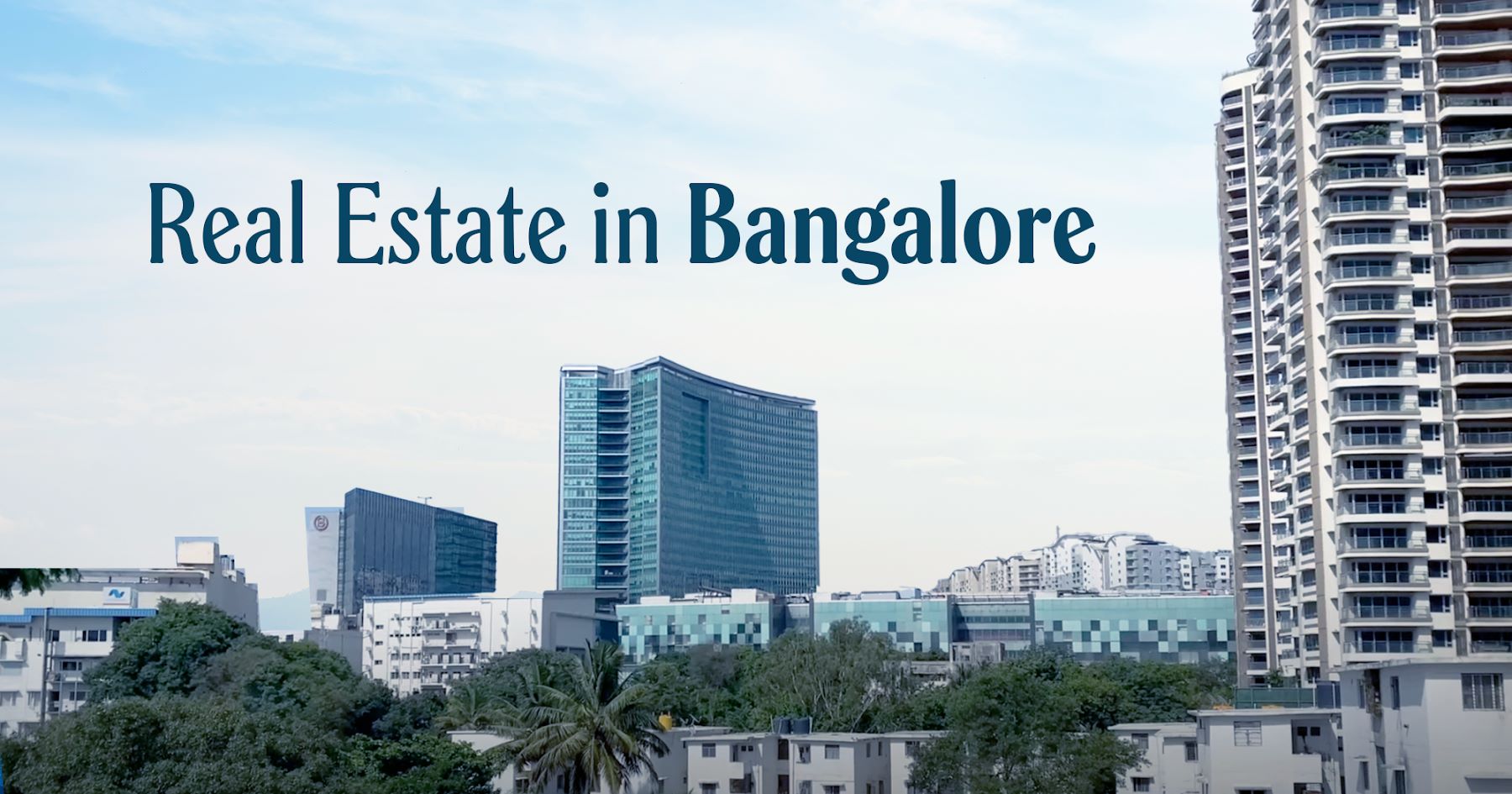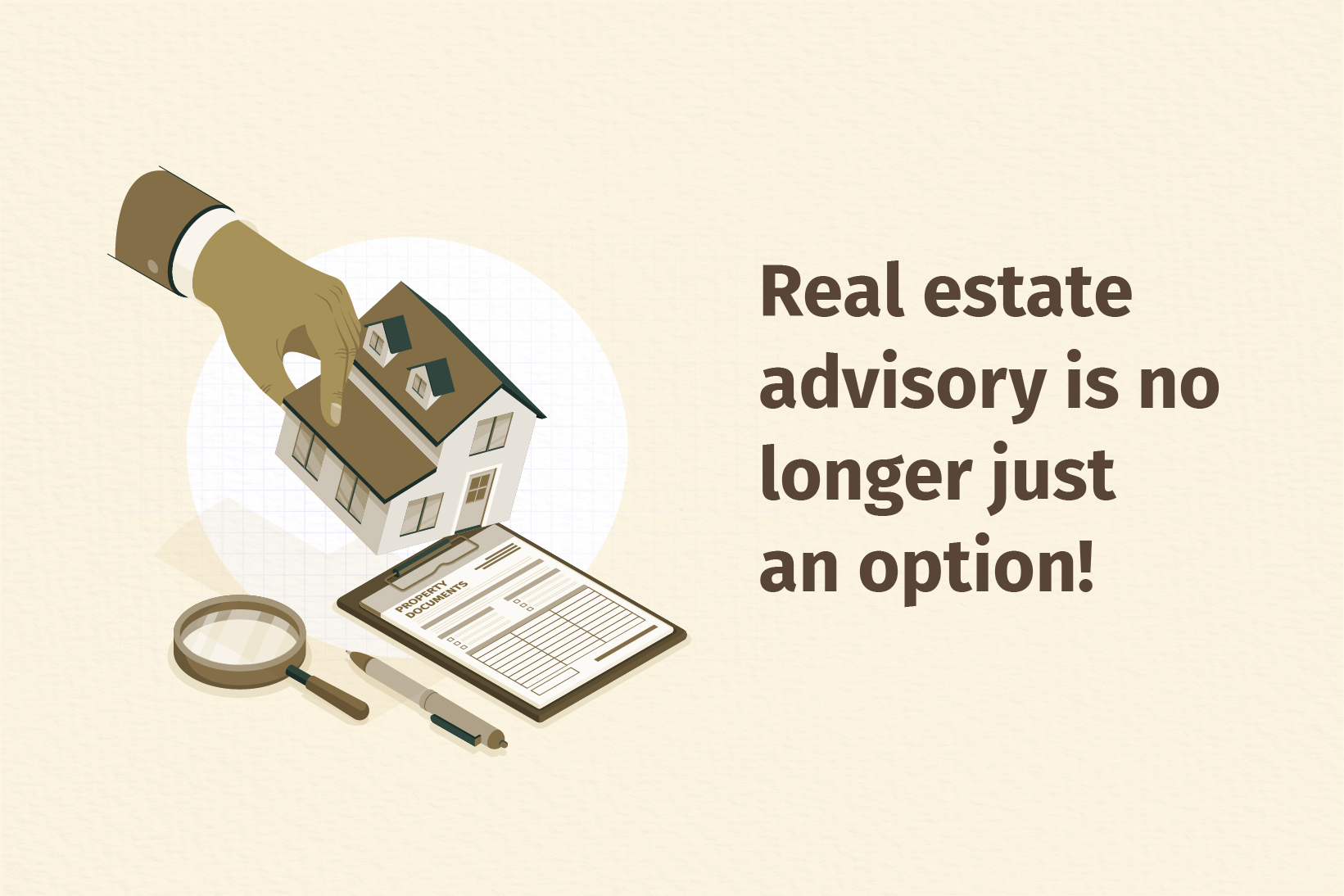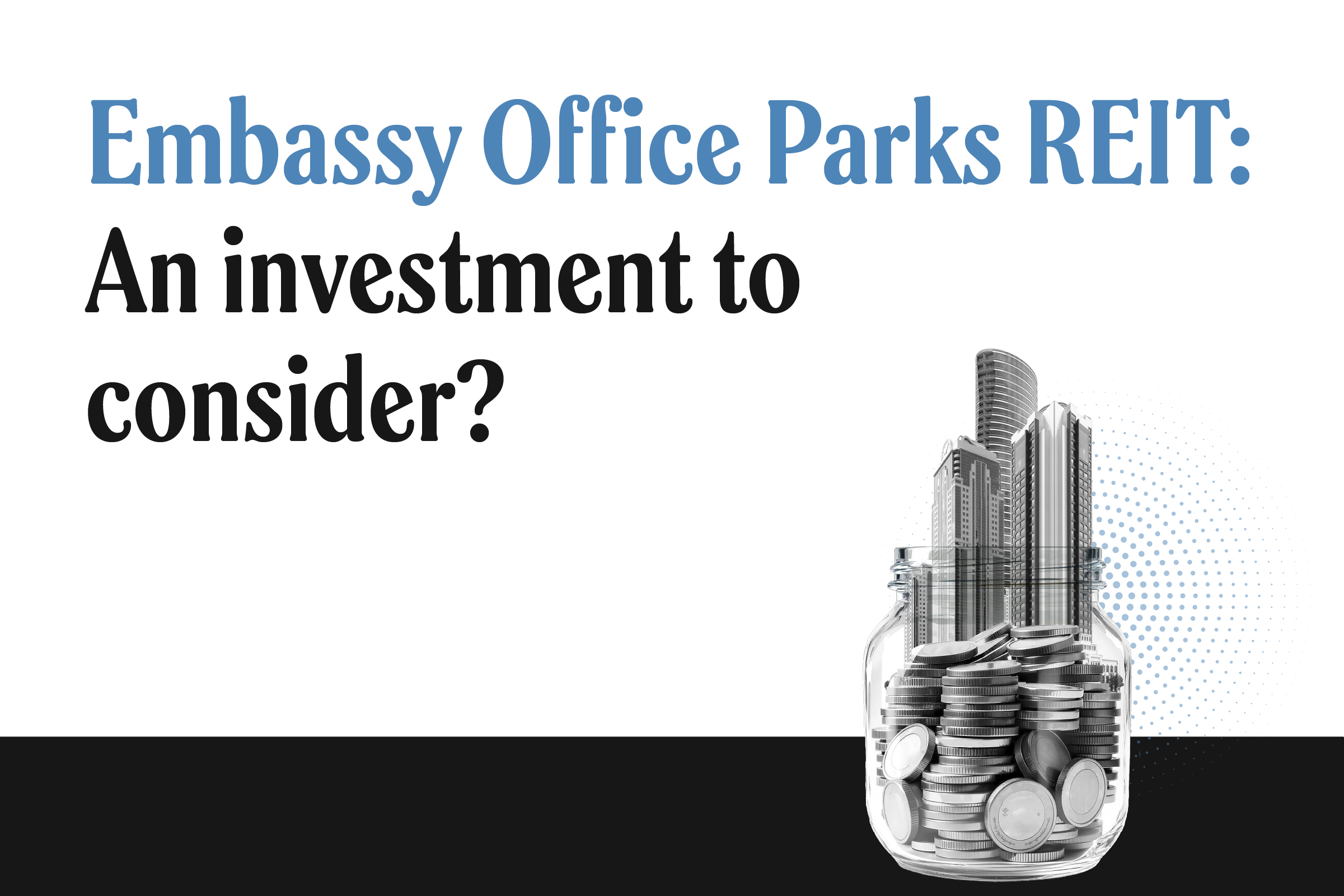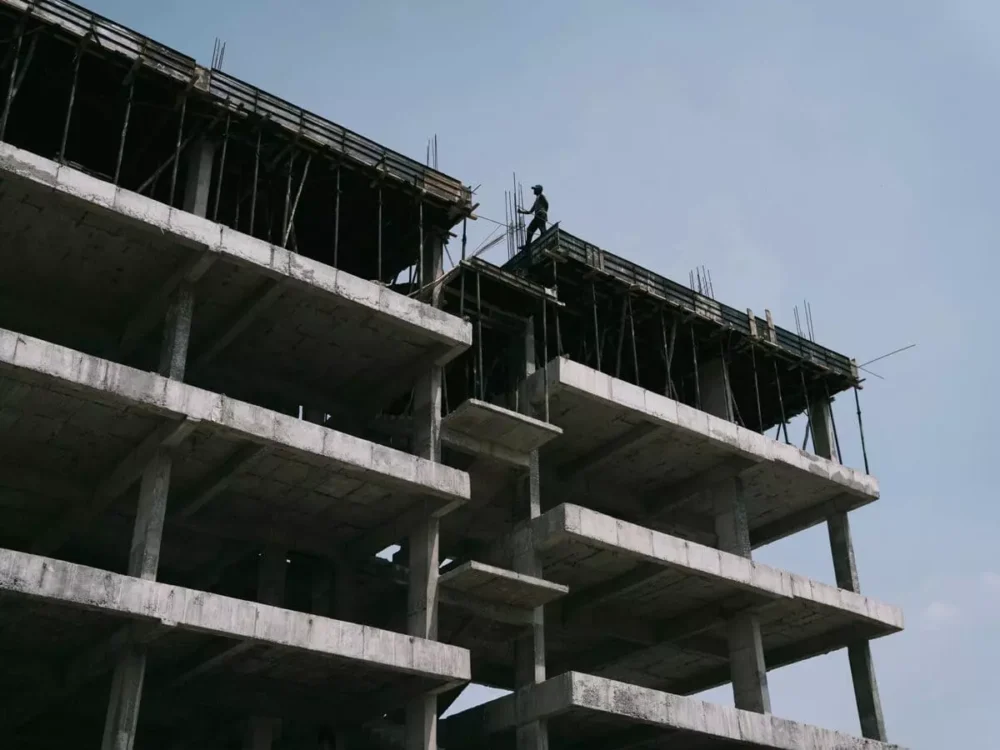Key Takeaways
Bangalore’s tech sector drives strong demand for properties under ₹2 crores
Average per-square-foot rate: ₹9,932 (December 2024), more affordable than other metros
83–91% of units in projects launched by Q3 2022 sold by Q3 2024, indicating high demand
Sustainability features like rainwater harvesting and solar installations are gaining popularity
Expanding metro and road networks boost property values, especially near tech hubs
Bangalore, often referred to as India’s “Silicon Valley,” has evolved into one of the most dynamic and sought-after real estate markets in the country. Whether you look at its booming IT sector, thriving startup scene, or modern infrastructure development, the city offers a unique blend of affordability and growth potential. Below is a comprehensive look at what makes Real Estate in Bangalore an opportunity worth exploring.
The Bengaluru Residential Real Estate Index (RREI)
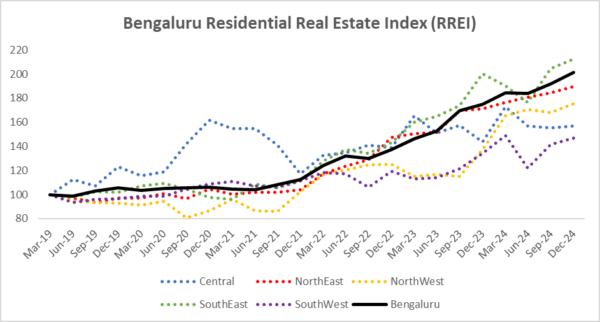
The Bangalore RREI tracks real-world housing price trends by using large-scale transaction data. In doing so, it seeks to eliminate speculation and rumors by offering objective metrics on how residential property values are actually changing quarter by quarter. Bangalore’s RREI is thus a reliable benchmark for local buyers, sellers, and investors who need evidence-based insights into the housing market performance.
A Snapshot of Bangalore’s Positioning
- India’s “Silicon Valley”: Bangalore earned the nickname “Silicon Valley of India” largely because of its concentration of technology companies – both Indian and multinational, spanning everything from software services to biotechnology and fintech. The city hosts more than 3,600 funded tech startups, having raised $70.1 billion since 2010, including $15.1 billion in 2024 alone. It often operates within specialised ecosystems such as the Koramangala startup district or the Whitefield tech corridor. This intense entrepreneurial energy continually draws in fresh talent, which in turn fuels demand for both rental and owner-occupied housing.
- Strong Economic Fundamentals: Adding to this dynamism is the city’s solid economic foundation. Bangalore’s real GDP is projected to grow at an 8.5% annual rate until 2035, a figure reflecting not just IT services, but also the thriving aerospace, biotech, and renewable energy sectors. Over time, these industries have diversified the local economy, ensuring that Bangalore is not solely reliant on software exports. This helps keep the city economically resilient and makes the real estate market less susceptible to downturns in any single industry.
- A Green and Future-Ready Focus: Despite the rapid pace of urbanisation, many developers and policymakers have recognised the importance of sustainable growth. This has led to an emphasis on eco-friendly residential communities featuring green building materials, natural lighting, optimised ventilation, and water recycling systems. Meanwhile, city planners are continuously working on addressing traffic congestion and depleting water tables, balancing business interests with environmental stewardship. Buyers increasingly seek housing that aligns with their ecological awareness, further motivating builders to adopt green certifications and advanced technologies.
Bangalore Real Estate Prices
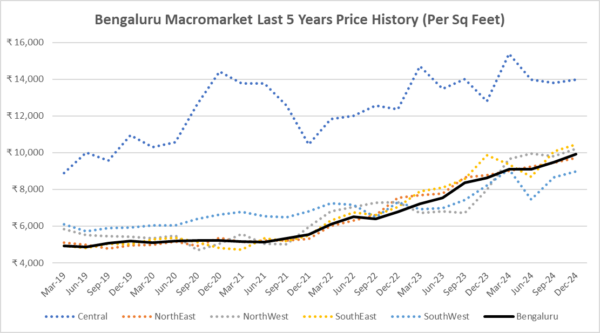
Real estate prices in Bangalore reflect the interplay of demand, developer premiums, infrastructure improvements, and macroeconomic conditions. As of December 2024, the average per-square-foot (PSF) rate stands at ₹9,932 – a figure that includes a wide range of localities, from modest suburban neighborhoods to high-end enclaves near prime tech hubs.
High Demand for Real Estate in Bengalore
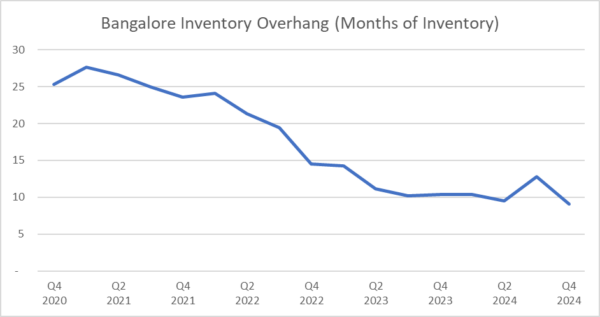
One of the defining characteristics of the Bangalore real estate market is its rapid absorption of newly launched properties. Projects introduced as recently as Q3 2022 have sold anywhere between 83% and 91% of their units by Q3 2024. This is a robust indicator of demand elasticity, suggesting buyers are both discerning and ready to act on the right opportunities. Importantly, Bangalore has an inventory overhang – or the time required to sell the remaining unsold units – of merely about 9 months as of December 2024. This short overhang signifies healthy market conditions, where new supply is quickly matched by consumer interest.
Bangalore Real Estate Market Affordability
Bangalore boasts a substantial share of residential units priced below ₹2 crores – 84% to 97%, in fact – making it generally more affordable. This affordability advantage stems from multiple factors, including:
o Lower Developer Premiums: With only 4 major developer premiums, the cost burden on new projects is comparatively lower.
o Wider Land Availability: Expanding suburban and peripheral areas like the northern belt near the airport, south-east near Sarjapur Road, and eastern stretches around Whitefield.
o High Supply of Mid-Range Projects: Many builders target young professionals and growing families with projects in the ₹50 lakh–₹1.5 crore range.
Bangalore’s Growing Sustainability
Buyers in Bangalore increasingly prioritise environmentally responsible features when selecting a home. Rainwater harvesting systems, solar installations, and advanced insulation methods are no longer seen as nice-to-have add-ons but as integral parts of new construction. This is partly because the city, known historically for its moderate climate and green cover, has experienced ecological strains. Consequently, residents and developers alike embrace technology solutions that conserve energy, reduce water usage, and maintain comfortable indoor temperatures.
Top-Performing Markets in Bangalore
| Macromarket | Micromarket | Latest PSF Rates | 5 Y | 3 Y | 1 Y |
|---|---|---|---|---|---|
| Bengaluru – Central | Binnipete | ₹ 12,590 | 16% | 20% | 10% |
| Bengaluru – NorthEast | Bidarahalli | ₹ 7,225 | 44% | 18% | 3% |
| Bengaluru – NorthWest | Malleshwaram | ₹ 15,338 | 43% | 35% | 28% |
| Bengaluru – SouthEast | Ramagondanahalli | ₹ 9,813 | 52% | 56% | 98% |
| Bengaluru – SouthWest | Kodipur | ₹ 5,845 | 37% | 14% | 16% |
Returns mentioned in the above table are CAGR returns over the mentioned period
Source: CRE Matrix, 1 Finance Research
While Bangalore is undeniably a large metropolis, its real estate market is composed of many sub-markets – each shaped by unique factors such as proximity to IT parks, land availability, and historical development patterns. Certain pockets like Binnipete, Bidarahalli, Malleshwaram, Ramagondanahalli, and Kodipur have shown consistent double-digit annual growth over multiple years. This robust performance can be tied to:
- Proximity to Major Tech Hubs
- Upcoming or Active Metro Lines
- Mixed-Use Townships
For buyers scouting specific micromarkets, it’s essential to consider long-term potential, infrastructure commitments, and future job growth. Localities that may appear peripheral today can quickly become tomorrow’s hotspots if strategic roads, Metro lines, or major tech campuses are planned in their vicinity.
| Avg. 2 BHK Price | Homeownership % | Avg. Unit Price-to-Income | ||||
|---|---|---|---|---|---|---|
| 35 yrs & below | 36-45 yrs | 46-55 yrs | 35 yrs & below | 36-45 yrs | 46-55 yrs | |
| ₹ 1.5 cr | 42% | 66% | 72% | 4.4x | 3.3x | 3.2x |
| Avg Income in Lakhs | 33.9 | 45.7 | 46.9 | |||
Source: 1 Finance Research.
Avg. Income in the above chart is the population average across age groups
Homeownership
A comprehensive study of 1511 “affluent middle class” in Bangalore shows that a notable 42% of people under the age of 35 own homes in Bangalore. By the time individuals reach the 46–55 age group, 72% own homes, highlighting a lifecycle pattern of property purchase that often coincides with increased earnings and family stability.
This relatively high level of early homeownership underscores Bangalore’s “end-user” nature. Many young professionals have started to prefer to own a property rather than rent, given the city’s stable job market, supportive ecosystem for entrepreneurship, and availability of mid-price-range homes.
Income-to-Price Ratios
A typical 2 BHK (two-bedroom-hall-kitchen) unit costs about ₹1.5 crore in Bangalore. For those under 35, this translates to an investment of 4.4 times their annual income. Lower ratios are particularly attractive to first-time buyers who might not have substantial savings but do have the benefit of stable tech salaries or dual incomes.
Affordability is also enhanced by competitive mortgage lending rates, which large sections of the city’s salaried population can leverage. With the central government’s consistent push for “Housing for All” and various credit-linked subsidies, younger buyers find it increasingly feasible to transition from renting to owning at an earlier stage in their careers.
Key Drivers of Bangalore’s Growth
1. IT & Startup Ecosystem
Bangalore’s transformation from a laid-back city to an IT powerhouse started in the 1990s, accelerated by economic liberalisation. Over time, it cemented its place as a hub for software, outsourcing, and multinational R&D centers. Today, the city’s flourishing startup culture further amplifies the need for high-quality office spaces and housing solutions. Professionals moving in from other parts of India stimulate fresh demand across budget segments.
2. Infrastructure & Connectivity
A city’s real estate potential is inherently tied to the efficacy and reach of its transportation infrastructure. In Bangalore, Metro extensions, improved road networks like the NICE Road and Outer Ring Road, and expansions toward the international airport area have been transformative. Formerly distant suburban locales have become viable for commuters, reducing travel times significantly. This broadens the scope for both developers and buyers, encouraging projects in places like Devanahalli, Sarjapur Road, Yelahanka, and Horamavu. Consequently, once “remote” neighborhoods often see a surge in property values, particularly in anticipation of future Metro lines.
3. Sustainability & Smart Homes
Beyond basic eco-friendly features, many builders now integrate advanced technology systems – whether it’s IoT-enabled thermostats, security systems, or voice-controlled lighting. Such amenities appeal to Bangalore’s sizable tech-savvy demographic, who value convenience, data-driven energy savings, and a modern living experience. As the city grapples with issues such as traffic congestion, water scarcity, and climate volatility, widespread adoption of sustainable building practices could play a pivotal role in preserving livability.
Future Trends to Watch in Bangalore
1. Ongoing IT/Tech Park Expansions
The city’s north-eastern and south-eastern belts, in particular, are poised for rapid development. Tech conglomerates often choose these areas for new campuses, lured by relative land availability and existing clusters of skilled labor. In response, housing projects tend to pop up in tandem with these expansions, bridging the gap between workplaces and residential neighborhoods.
2. Sustainability Upgrades
Many established real estate developers are shifting gears to stand out in a competitive market. Features such as smart waste management, robust water-recycling processes, and solar-power generation help differentiate new projects. These sustainability-driven decisions are partly driven by consumer demand and partly by stricter government policies around rainwater harvesting and energy efficiency.
3. Affordable Yet Rising Market
Bangalore’s real estate is widely deemed more approachable than Mumbai or Delhi, thanks to fewer government-imposed premiums and an abundance of mid-range flats. However, as prime localities near the central business district and major IT hubs see rising values, a consistent upward trajectory for the entire city is evident. Over time, neighborhoods once considered “fringe” are likely to become more central to the city’s growth story.
Conclusion
In summation, Bangalore’s real estate market encapsulates a fascinating blend of affordability, demand, and forward-looking development. Its strong economic fundamentals, anchored by a thriving tech ecosystem and a diverse commercial base, have consistently attracted homebuyers and investors from across India and the world. Metro expansions, ring roads, and an overarching focus on sustainability and smart homes add layers of confidence, making the city resilient even in the face of broader economic uncertainties.




